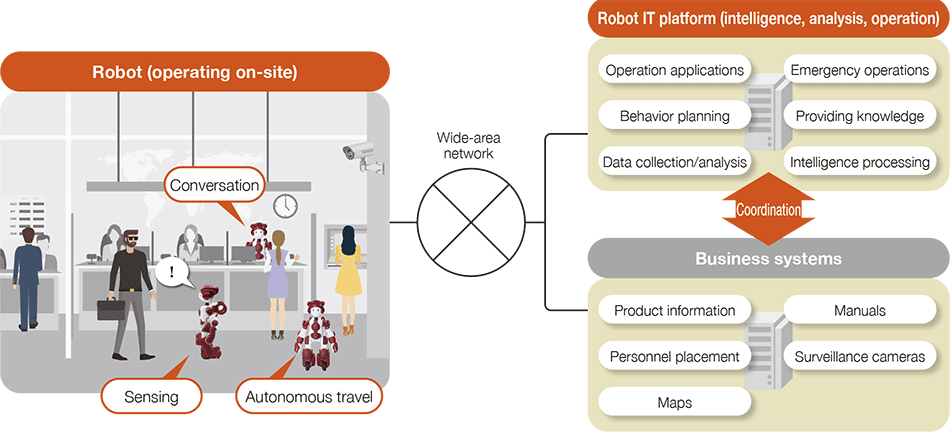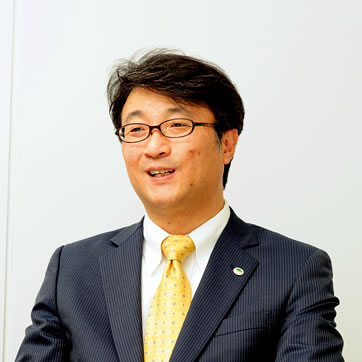EMIEW3 for Use in Actual Services
Is EMIEW3 distinctly different from other interactive robots?
BabaAt the moment, most interactive robots are used solely for marketing and PR purposes. EMIEW3 on the other hand is a humanoid robot intended for use in actual services such as approaching customers in need of assistance and providing guidance. As such, EMIEW3 further advances elemental technologies such as autonomous travel technology accumulated since the development of the first generation of EMIEW to ensure stable operation at customers’ sites. The use of robots in actual services poses numerous challenges, like uneven road surfaces, for example. We therefore made a number of modifications, such as giving EMIEW3 a lower center of gravity than EMIEW2 and giving it a four-wheel structure with stabilizer wheels. We also gave EMIEW3 a topple-restore function so that if it falls over, it can stand up by itself and return to the task at hand. As for the robot intelligence processing system, we did, of course, further advance the voice recognition and image recognition technologies used in EMIEW2.
ShitaraWith its small, lightweight body and design, EMIEW3 has the same human centric design as EMIEW2 in terms of friendliness. We managed to deliver a robot that was small and compact and yet capable of providing actual services because we adopted a remote brain configuration, giving the robot itself only functions that require real-time processing such as collision avoidance and running other intelligence processing on the cloud. This configuration enables linkage with environment cameras and information-sharing with multiple EMIEWs and it also allows us to flexibly run applications to meet a range of operational needs. Through the development of a mother brain component that provides centralized monitoring and control of multiple sites and multiple robots, it is also possible for EMIEWs to hand services over to each other. Combining operational technology (OT) and IT in this way, EMIEW3 is very much a robot befitting of Hitachi.
Overview of the service robotics





